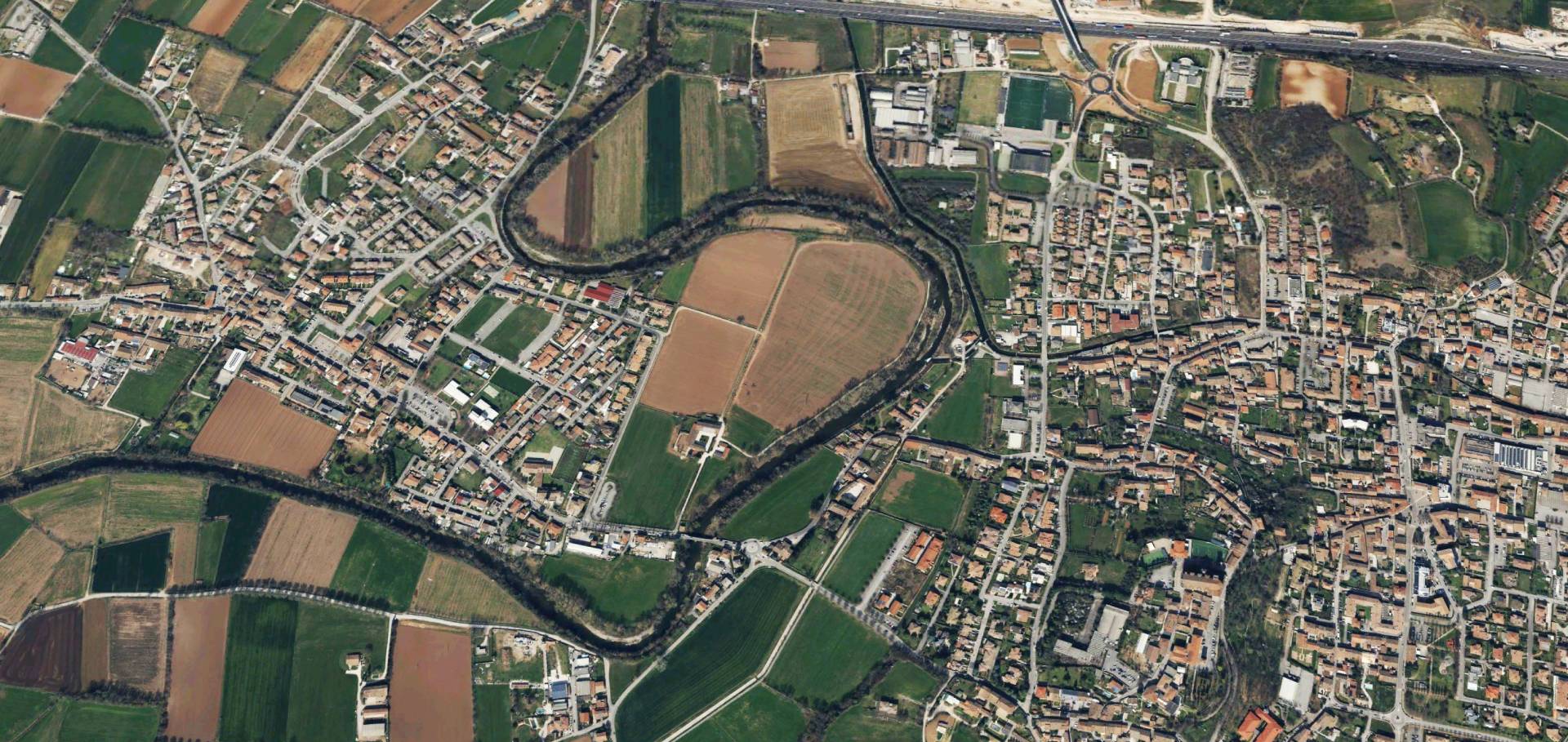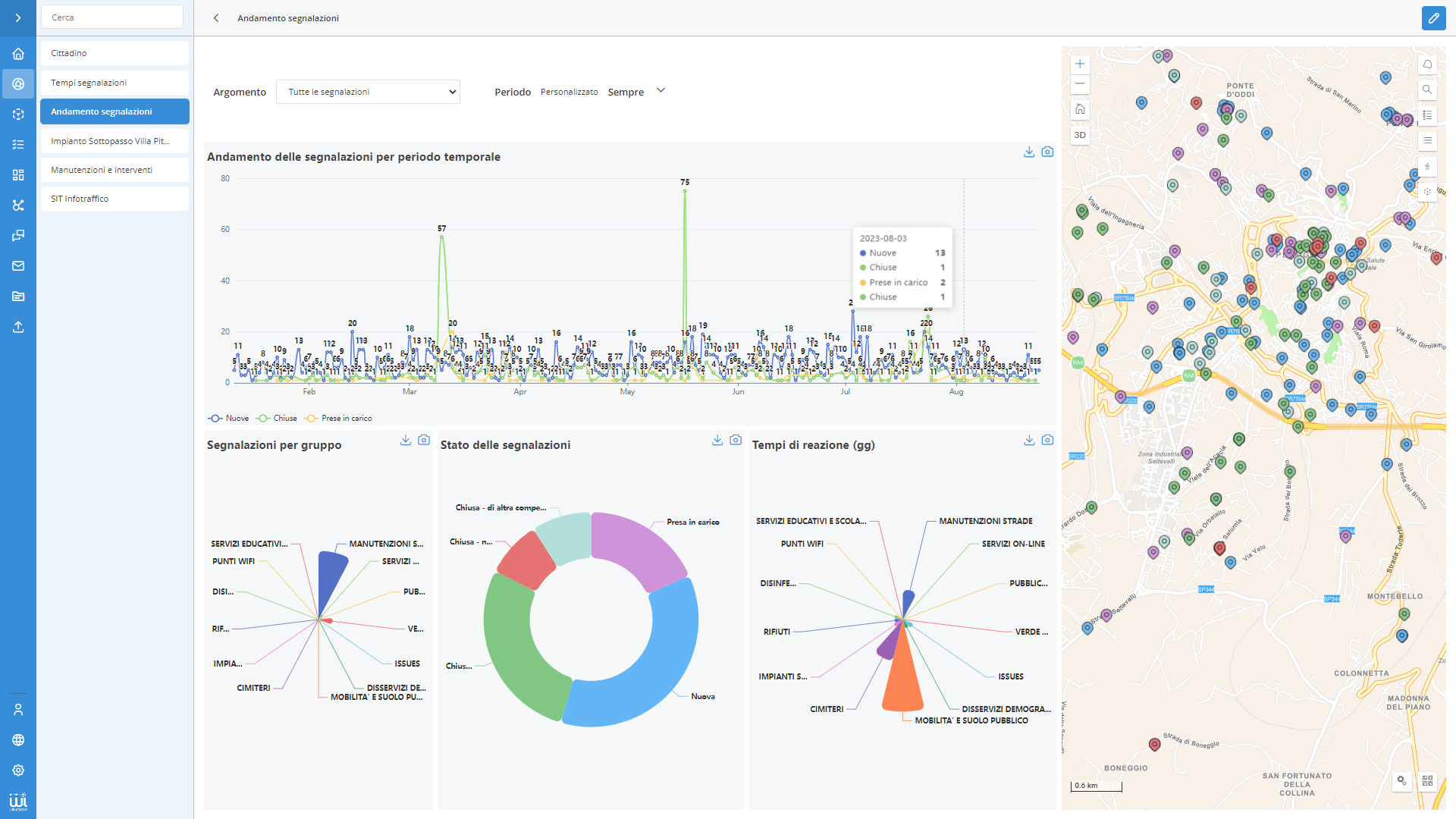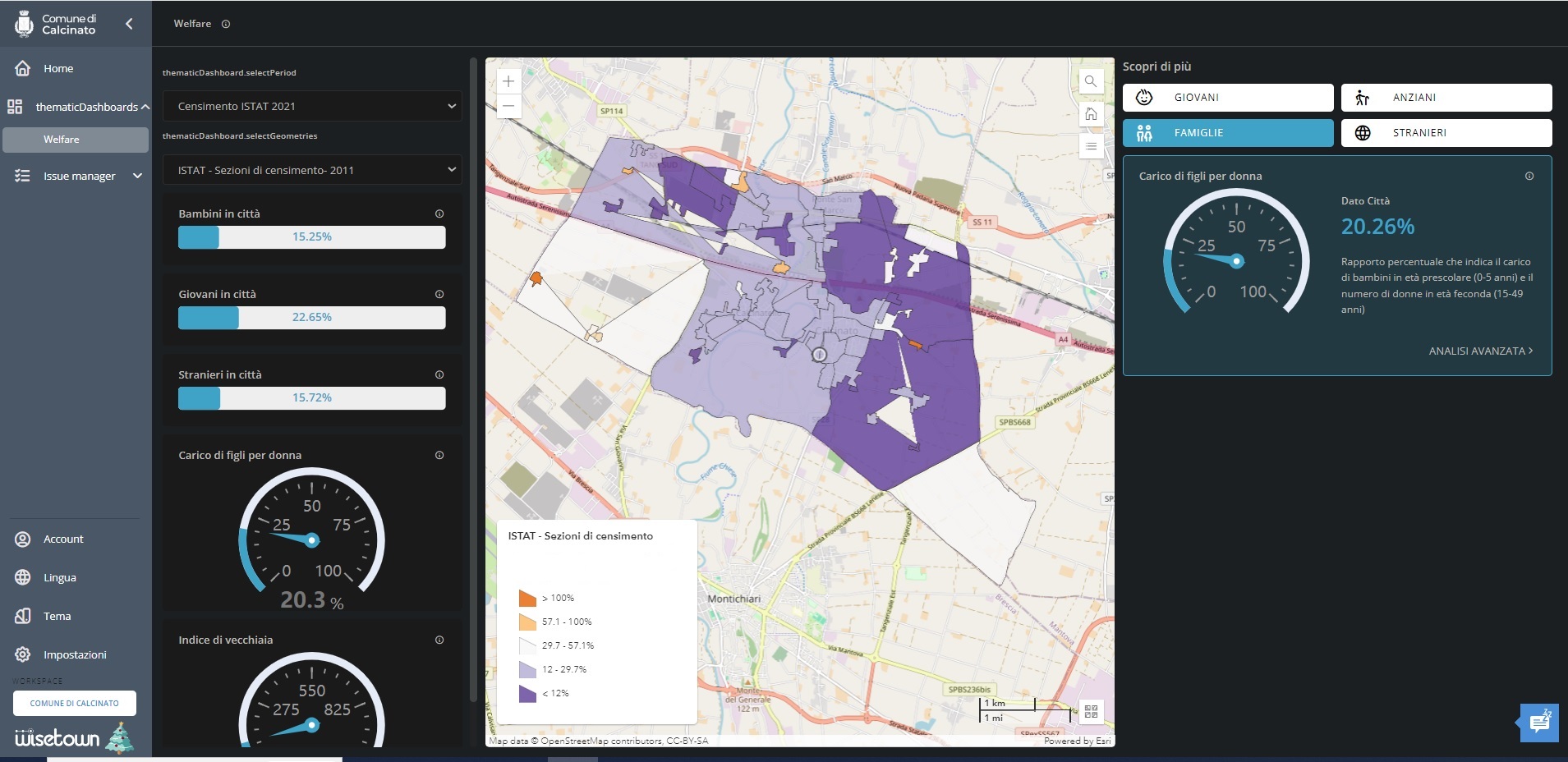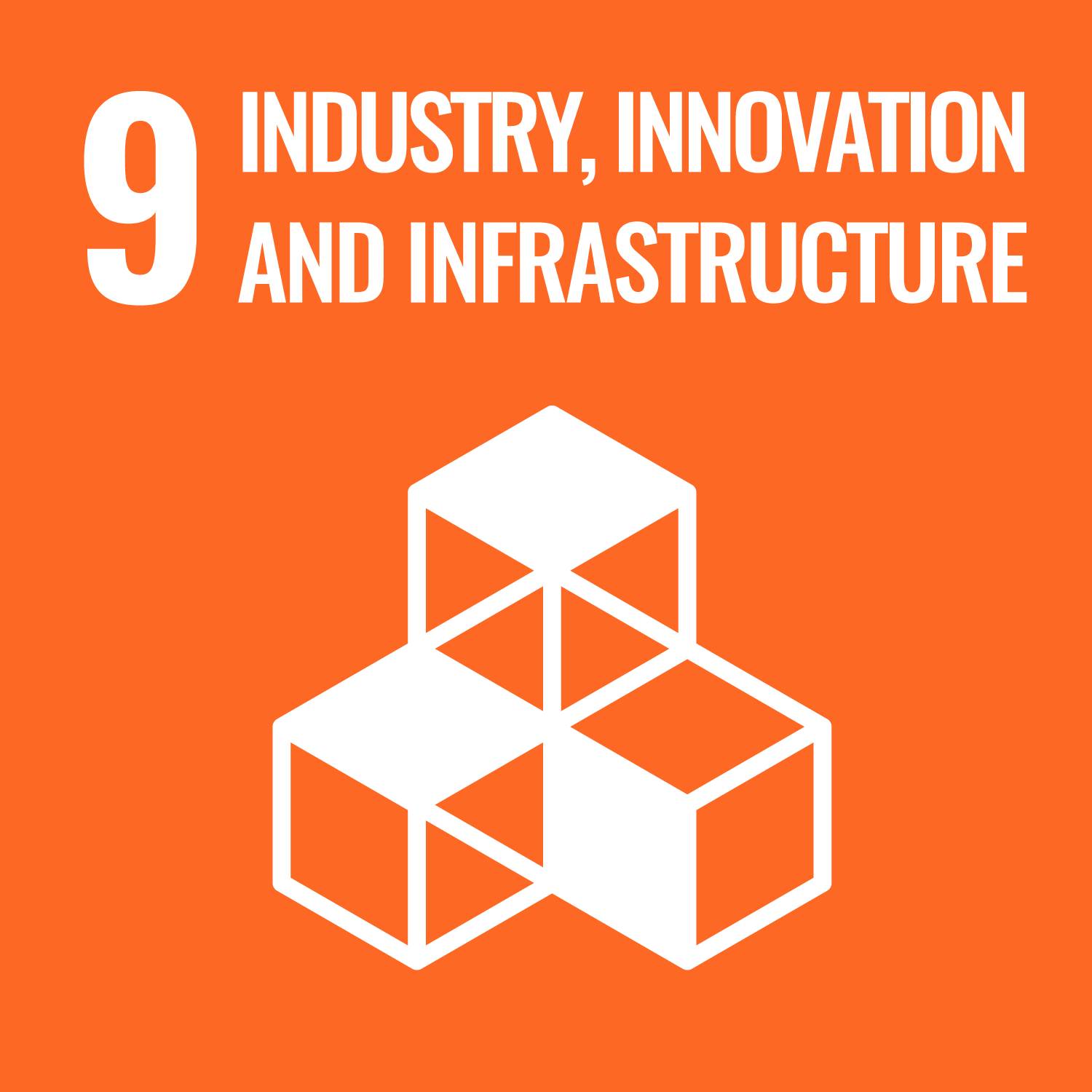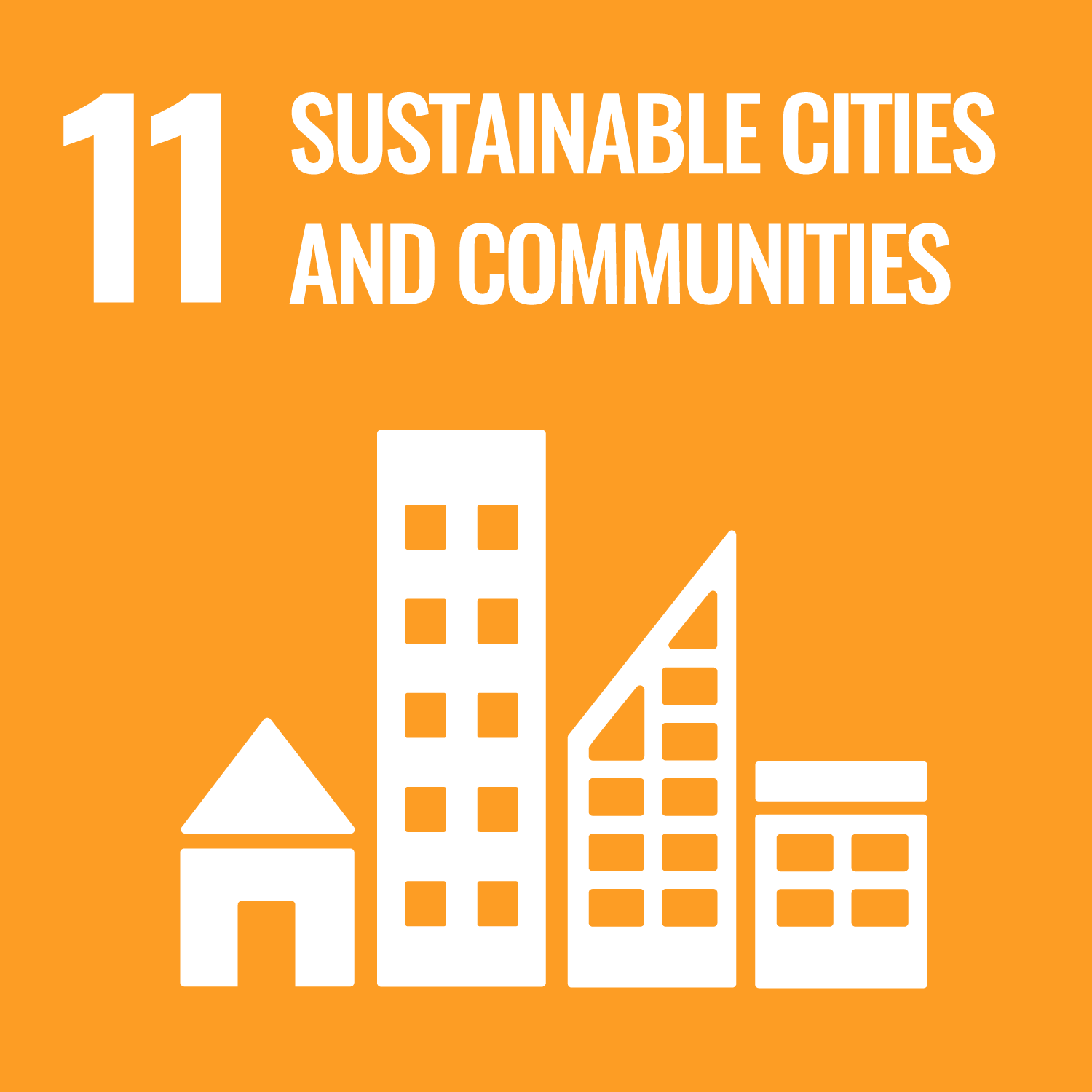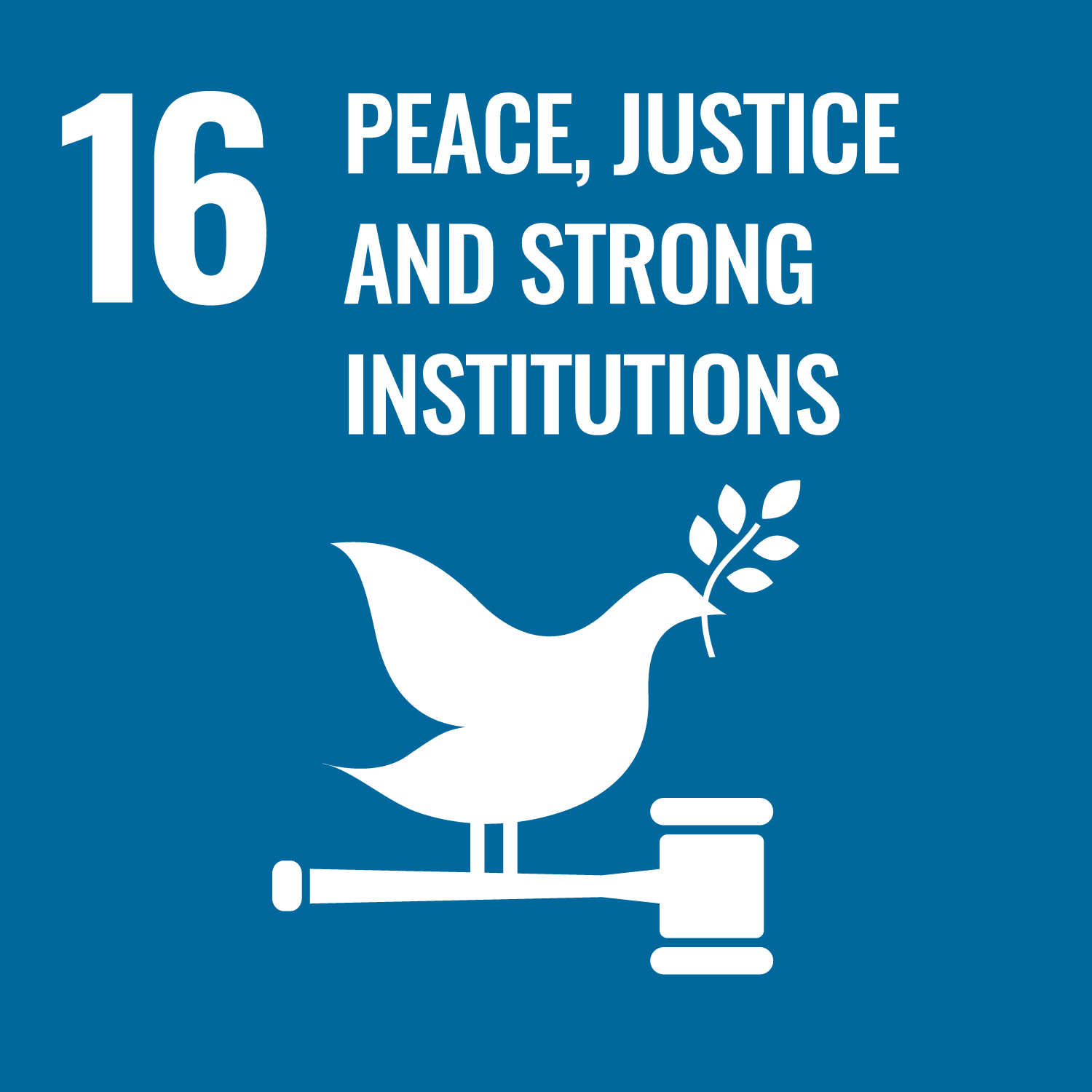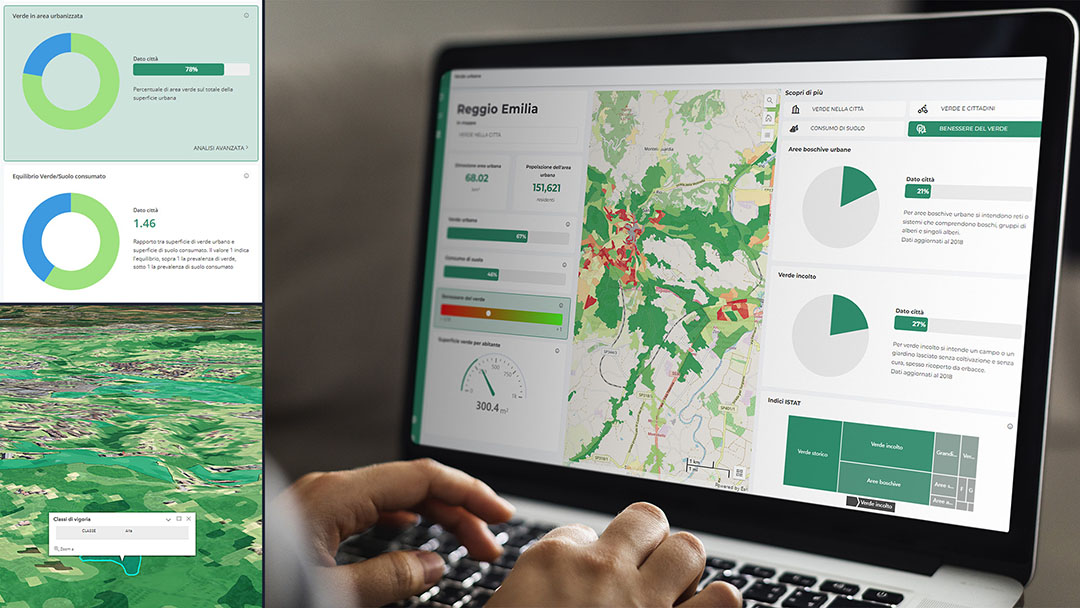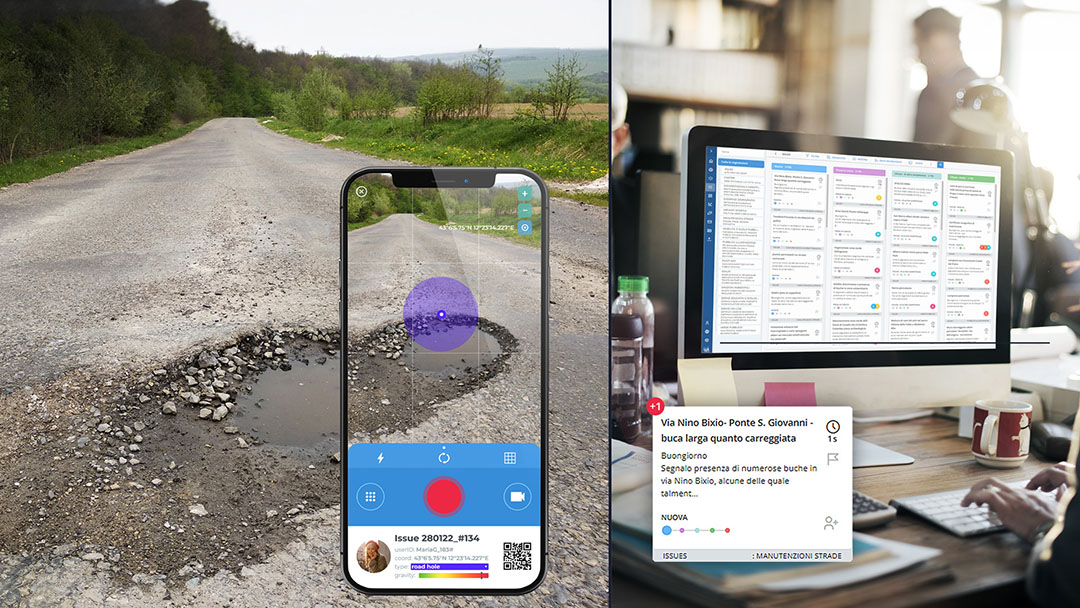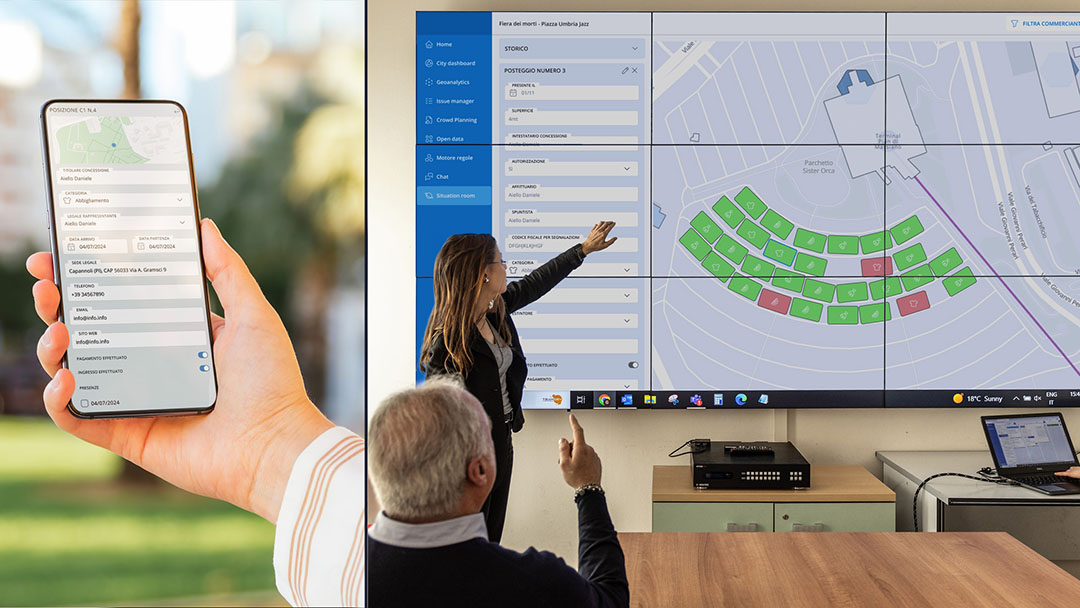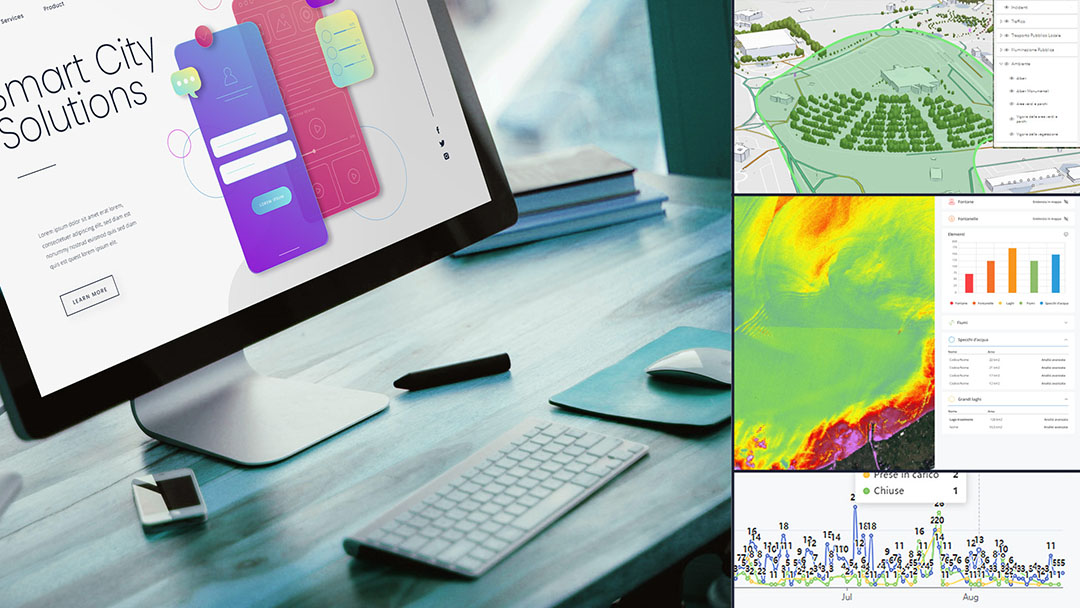calcinato smart city
the impact of technological innovation and digitalization
The technological innovation of the Municipality of Calcinato, located in the province of Brescia in Lombardy, emerges as a result of attention to the territory and citizens. With a population of 12,993 people and a unique geographical context characterized by morainic hills, prealps and the beginning of the Po Valley, the Municipality has launched a path of innovation and digitalization of its processes.
Digital innovation plan of the Municipality of Calcinato
The technological transition, driven by the awareness of the importance of combining tradition and modernity, has been implemented through various initiatives. These encompass the digitization of select administrative processes and the adoption of the WiseTown platform. The latter facilitates communication between municipal offices, providing a centralized environment that efficiently optimizes internal collaboration, as well as providing access to local population data.
Smart city project
WiseTown was adopted as part of an ambitious project that aims to improve workflow and facilitate the exchange of information between municipal offices. Besides, the platform includes the Welfare dashboard, dedicated to the detailed monitoring of various aspects related to the social fabric of the community. Its activation highlights the commitment of the Municipality in ensuring the welfare of citizens, with particular attention to the most fragile social categories.
Issue manager for efficient communication
The Issue Manager application has been customized to optimize and efficiently coordinate information exchange between different municipal administration areas. This platform allows the involved offices to send and manage requests, respond to issues from other offices, and monitor the status of processes in real-time. The ability to track all phases and automatic notifications ensures constant monitoring and prompt response to requests.
In the reporting section, the Municipality has detailed statistics on predominant requests, the most active offices and resolution times.
This technological solution represents a significant step towards a more modern, efficient and transparent municipal administration, contributing to the benefit of the whole community of Calcinato. Link to the application
Welfare Dashboard
The Welfare Dashboard, included in the WiseTown technological infrastructure and adapted to the needs of the Municipality of Calcinato, plays a central role in the administrative modernization and the Smart City approach. Through the use of maps, graphs and indicators, this platform provides a clear and immediate visualization of local population data. This instrument facilitates the monitoring of various aspects, including the birth rate and childcare services, the distribution of families and possible support policies, the percentage of young people and their geographical dispersion, and the old age index.
The data, coming from open sources, allow the Municipality of Calcinato to adopt a proactive approach in the planning and allocation of resources. The Welfare Dashboard, therefore, is a strategic resource to guide administrative decisions, acting as a guide in the design and implementation of targeted social policies. Link to the application
Benefits: digitization and modernization of the public administration
The digitization and adoption of innovative technologies in the Municipality of Calcinato bring profound changes, radically transforming the administration and community life. This evolution, although it may appear as a mere technological revolution, has tangible impacts that permeate various aspects of the social fabric.
Firstly, digitization increases administrative efficiency, streamlining bureaucratic processes and reducing management and resolution time. This not only simplifies the work of the municipal offices but also translates into better provision of services.
In addition, digitisation brings significant economic savings. The elimination or reduction of paper-based procedures results in more efficient management of resources, with a positive impact on operating costs. This frees up resources that can be allocated in a more targeted manner to services of greater community relevance.
Digitisation in small municipalities is not just a technological issue; it is a cultural and administrative change that brings with it several tangible benefits. It represents a fundamental step towards a more modern, efficient and participatory community, able to face the challenges of the future with resilience and innovation.
Characteristics of Calcinato
The territory of the Municipality of Calcinato is distinguished by the presence of two hills and the passage of the river Chiese. One of the hills is occupied by the old town, while the second is mainly agricultural.
The fusion of striking natural beauty with distinctive architecture creates a unique landscape, helping to define the visual and cultural identity of the Municipality of Calcinato.
Visiting this place is an unforgettable experience, which leaves an indelible mark on the mind and heart of those who have the privilege of appreciating it.
Contribution to sustainable urban development
The project aims to contribute to the achievement of the following Sustainable Development Goals of the 2030 Agenda, defined and promoted by the United Nations:
SDG 9. Building resilient infrastructure, promoting inclusive and sustainable industrialisation and fostering innovation
smart city solutions
Customizable modules that support administrators in developing a sustainable, safe, inclusive and participatory urban ecosystem.


